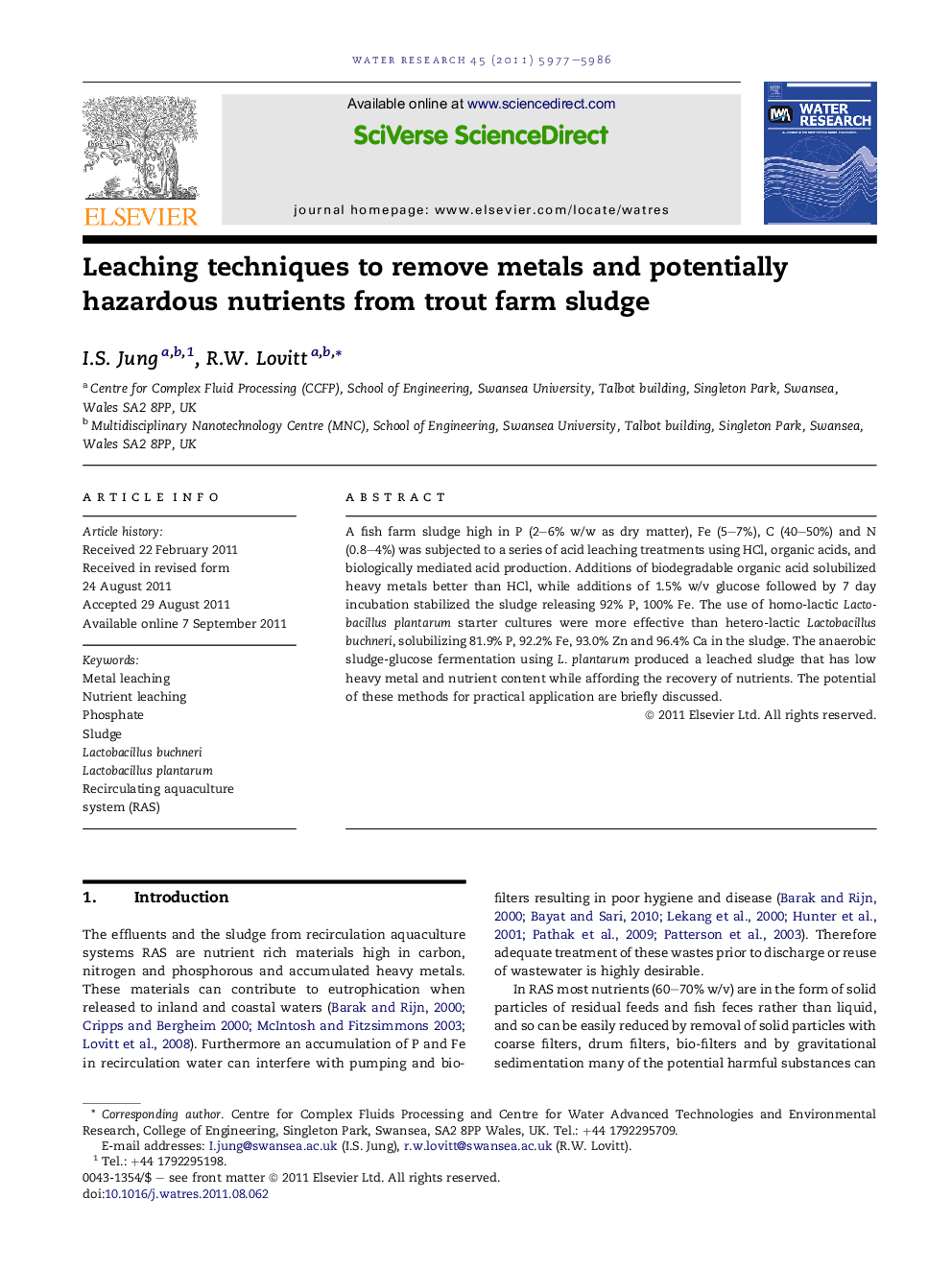| Article ID | Journal | Published Year | Pages | File Type |
|---|---|---|---|---|
| 4482682 | Water Research | 2011 | 10 Pages |
A fish farm sludge high in P (2–6% w/w as dry matter), Fe (5–7%), C (40–50%) and N (0.8–4%) was subjected to a series of acid leaching treatments using HCl, organic acids, and biologically mediated acid production. Additions of biodegradable organic acid solubilized heavy metals better than HCl, while additions of 1.5% w/v glucose followed by 7 day incubation stabilized the sludge releasing 92% P, 100% Fe. The use of homo-lactic Lactobacillus plantarum starter cultures were more effective than hetero-lactic Lactobacillus buchneri, solubilizing 81.9% P, 92.2% Fe, 93.0% Zn and 96.4% Ca in the sludge. The anaerobic sludge-glucose fermentation using L. plantarum produced a leached sludge that has low heavy metal and nutrient content while affording the recovery of nutrients. The potential of these methods for practical application are briefly discussed.
Graphical abstractFigure optionsDownload full-size imageDownload high-quality image (129 K)Download as PowerPoint slideHighlights► Different types of acid leaching of aquaculture sludge were used to remove metals and nutrients. ► Addition of carbohydrate enhanced nutreint release in the presence of inoculated bacteria. ► A Lactobacillus plantarum inoclum gave good nutrient release and sludge preservation. ► This treatment was better than mineral or organic acids or the addition of carbohydrate alone.
